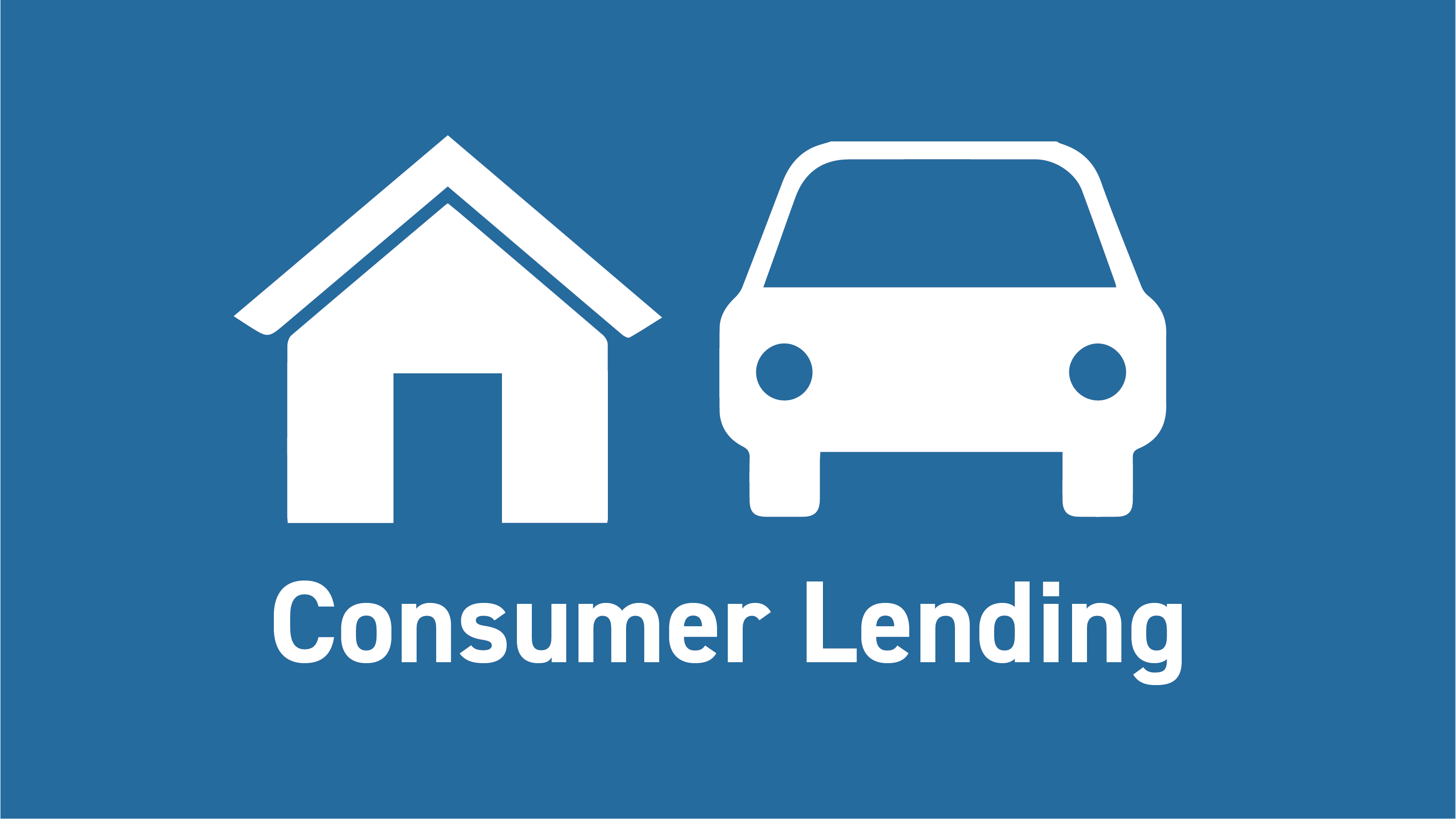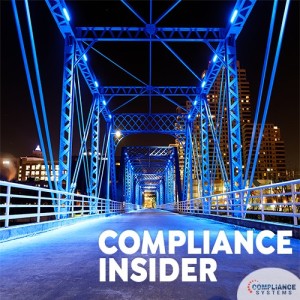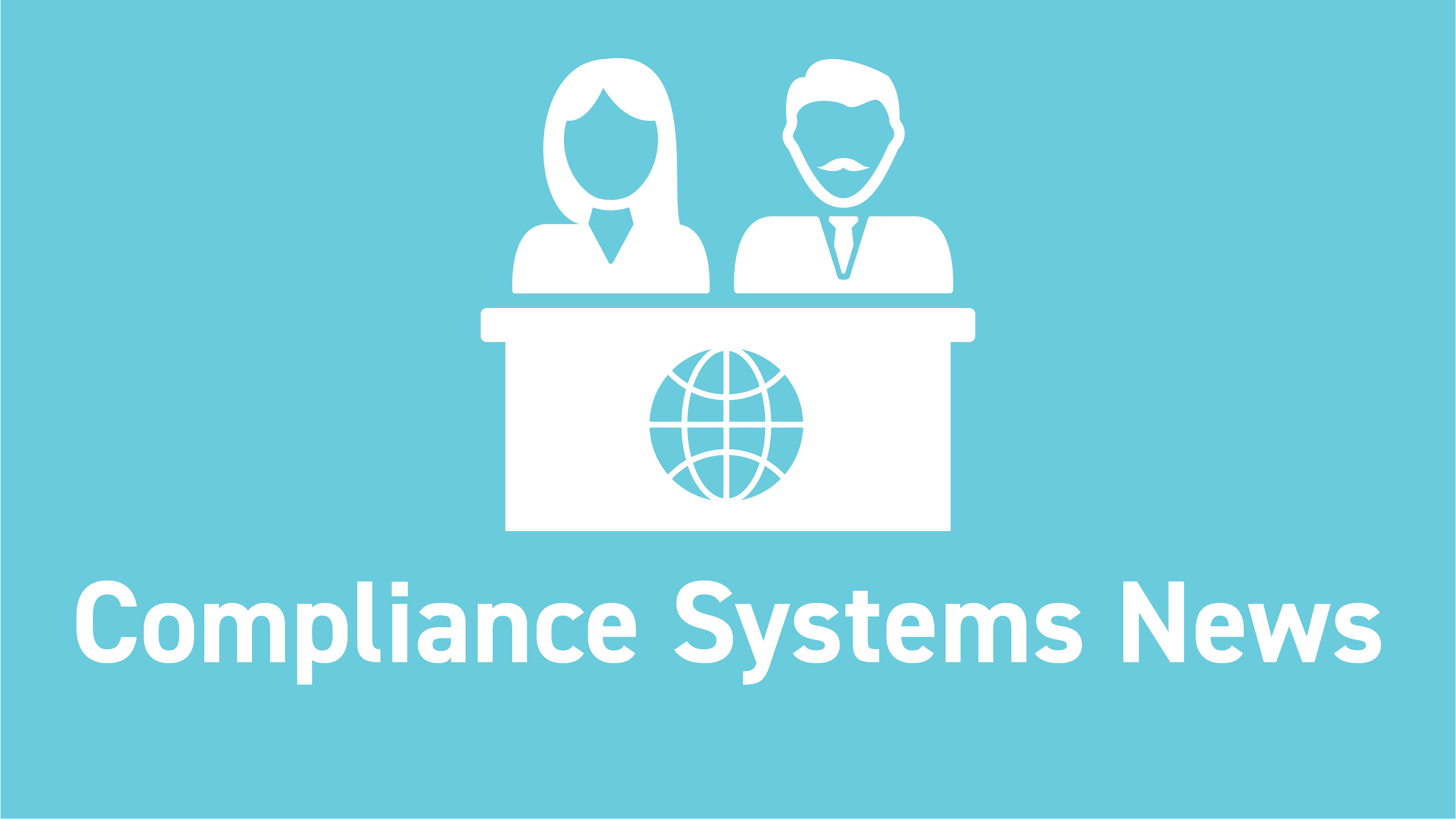

FTC Proposed Rule on Auto Sales and Its Impact on Lenders
On June 23, 2022 the Federal Trade Commission (FTC) issued a proposed rule to regulate motor vehicle sales and dealers using authority granted to it in the Dodd-Frank Consumer Protection Act.1 Notably, the FTC did not seek any Requests for Information or issue any Advanced Notice of Proposed Rulemakings in this area prior to issuing the proposed rule. The rule, while relatively short, is sweeping in scope and would create rigorous compliance burdens for auto dealers and auto lenders. There are four substantive areas of regulation within the proposed rule: (1) Prohibited Misrepresentations, (2) Disclosure Requirements, (3) Dealer Charges for Add-ons and Other Items, and (4) Recordkeeping.
Proposed Rule Content
Prohibited Misrepresentations
The prohibited misrepresentation section of the rule makes it an unfair, deceptive or abusive act or practice (UDAAP) for a motor vehicle dealer to make any misrepresentation in 16 different areas including (i) the cost or terms of purchasing/financing/leasing a vehicle, (ii) any cost, limitation, or benefit of an add-on product or service, (iii) the availability of rebates factored into the price but not offered to all consumers, and (iv) whether consumer reviews or ratings are unbiased, independent, or ordinary consumer reviews.2
New Disclosure Requirements
The disclosure requirements section of the rule specifies five categories of required disclosures and makes the failure to disclose a UDAAP violation. The first section requires that the vehicle’s offering price must be disclosed in any advertisement that expressly or by implication references a specific vehicle and must be disclosed in a dealer’s first response to any communication that references a specific vehicle.3 For example, a potential UDAAP violation could occur if a customer makes a general inquiry on whether a particular vehicle has a certain feature and the dealer responds confirming it does or does not have that feature but fails to state the offering price of the vehicle in its response, even though price was not the subject of the consumer’s inquiry.
Additionally, a required disclosure of an “Add-on List” must be presented if a dealer charges directly or indirectly for any optional add-on products or services. The Add-on List is an itemized list of all optional add-ons and services for which the dealer charges customers and must disclose each add-on and the price of each add-on. This list must be presented on each website, online service, or mobile application operated by or on behalf of the dealer and at the dealership.
The rule also requires certain financial disclosures, including the total amount of payments and consideration for the finance or lease. The rule does not address how this is different than the total sales price that is required to be disclosed for credit sales under the Truth in Lending Act, or, if it is the same, whether the Truth in Lending disclosure as it currently exists sufficiently satisfies this rule. The proposed rule offers no guidance on how its required disclosures might overlap with or contradict other regulatory disclosures.
Add-ons that Provide “No Benefit” and Add-on Consent Requirement
The next part of the rule addresses dealer charges for add-ons and other items.4 The rule makes it a UDAAP for a dealer to charge for an “add-on that provides no benefit to a consumer” and specifically refers to nitrogen filled tires, duplicative warranty coverage, and GAP insurance when loan to value ratios would result in the consumer not benefiting from the coverage. The rule does not define the standard of “benefit to the consumer”. For example, many GAP policies provide deductible reimbursement coverage even if loan to value ratios do not make it an obvious benefit. Outside of the selected and named products, dealers would have the burden of deciding which add-ons might provide enough benefit to the consumer to stay compliant with the rule.
Dealers will also be required to offer the vehicle to the consumer without any add-ons factored into the price and must get an express declination from the consumer of the price without add-ons. This declined offer must be in writing, dated, and signed by the consumer and the dealership manager, even in circumstances where the consumer wants add-on products or services. The dealer must give the consumer all price information with financing options for the vehicle without the add-ons; the consumer must sign this disclosure to expressly decline this price before the dealer and consumer can proceed with the sale including any add-ons.
Recordkeeping
The rule would require dealers to maintain records with a two-year retention period.5 Any records related to advertising, add-on products, add-on lists, customer inquiries about add-ons or vehicles, dealer responses, financing documents whether a sale was finalized or not, and consumer declinations are required to be retained by the rule.
Reactions to the Rule
The proposed rule passed the FTC commission on a 4-1 vote. The proposed rule comes with a significant overview and background section of the auto sales/leasing industry practices and the Commission majority believes the rule will protect Americans from deceptive acts and practices and a “panoply of harms”6 that consumers face from unfair business practices. Commissioner Christine Wilson was the lone dissenter and cited the cumbersome nature of rulemaking and the difficulty in keeping rules up to date with industry practices. Also among her concerns were the stifling nature of complex regulations on innovation.7 In a time when auto manufacturers, fintechs, and dealers are gearing up to pivot the car buying process to more user friendly online digital transactions, she believes the rule is designed for in-person brick and mortar transactions.
National Automobile Dealers Association President and CEO Mike Stanton released a statement calling the rule “completely unwarranted, redundant, and ineffectual”.8 He believes it will cause harm to consumers through increased prices, extended transaction times, and a more complex and inefficient buying experience.
Implications for Lenders
These added requirements not only increase the complexity of an auto transaction, but they could lead to auto loan financers being on the hook for noncompliant transactions through the FTC’s holder rule. The FTC’s holder rule allows a plaintiff to bring any claim against the contract holder (the financial institution that purchased the retail installment contract from the dealer) that they could assert against the original seller even if the misconduct was wholly on the part of the seller.9
In January of 2020 the FTC released an advisory opinion allowing plaintiffs the recovery of attorney fees and costs from holders in cases where applicable law grants a right to them if the claim was pursued as against the seller.10 Financial institutions that buy retail installment contracts from auto dealers should take note of this proposed rule and the potential compliance issues that could be created by it. Should a dealer fail to meet the requirements of the proposed rule, it could ultimately cost the financial institution more than they bargained for through the FTC holder rule.
Public Comment Period
The public comment period on the proposed rule closes on September 12, 2022. The National Automobile Dealers Association has requested a 120-day extension of the comment period due to little advanced notice of the rule and the complexity of researching its effects on the industry.11 Eight national consumer advocacy associations, including the National Consumer Law Center, have submitted comments in opposition of extending the comment period.12 On August 23, 2022 the FTC issued a statement and declined to extend the comment period deadline.13
1 https://www.federalregister.gov/documents/2022/07/13/2022-14214/motor-vehicle-dealers-trade-regulation-rule#h-8
2 https://www.federalregister.gov/d/2022-14214/p-488
3 https://www.federalregister.gov/d/2022-14214/p-505
4 https://www.federalregister.gov/d/2022-14214/p-519
5 https://www.federalregister.gov/d/2022-14214/p-547
6 https://www.federalregister.gov/d/2022-14214/p-569
7 https://www.federalregister.gov/d/2022-14214/p-570
8 https://www.nada.org/nada/press-releases/nada-responds-ftcs-proposed-vehicle-pricing-advertising-rule
9 https://www.ftc.gov/legal-library/browse/rules/holder-due-course-rule
10 https://www.ftc.gov/system/files/documents/advisory_opinions/commission-statement-holder-rule-attorneys-fees-costs/p124802_commission_statement_on_the_holder_rule_and_attorneys_fees_and_costs.pdf
11 https://www.regulations.gov/comment/FTC-2022-0046-0019
12 https://www.regulations.gov/comment/FTC-2022-0046-0986
13 https://www.ftc.gov/system/files/ftc_gov/pdf/Matter%20No.%20204800%20-%20Letter%20re%20Extension%20for%20publication.pdf

Federal Legislation Addresses LIBOR Discontinuation
The London Interbank Offered Rate (LIBOR), which is often used as the index to calculate the variable interest rate in both consumer and commercial loan transactions, will effectively be discontinued after June 30, 2023. While many consumer and commercial loan documents contain interest rate fallback or replacement provisions which contemplate the discontinuation or unavailability of an interest rate index, there may be some LIBOR legacy contracts that do not account for the replacement of LIBOR.
On March 15, 2022, the Adjustable Interest Rate (LIBOR) Act (the LIBOR Act) was signed into law as part of the Consolidated Appropriations Act of 2022. The LIBOR Act addresses the issues relating to and provides a uniform process for replacing LIBOR. If a LIBOR contract1 either (a) contains no fallback provision or (b) contains a fallback provision that neither identifies a specific benchmark replacement2 nor a determining person,3 the LIBOR Act provides that LIBOR will automatically be replaced by the Board-selected benchmark replacement4 on the LIBOR replacement date5. If the LIBOR contract contains a fallback provision that identifies a benchmark replacement that is not based on LIBOR, the LIBOR Act will not apply.
In those instances where a determining person is identified in a fallback provision, such person can select the Board-selected benchmark replacement or a benchmark other than the Board-selected benchmark replacement. If the determining person selects the Board-selected benchmark replacement, the LIBOR Act provides that such selection shall be (a) irrevocable, (b) made by the earlier of the LIBOR replacement date and the latest date for selecting a replacement under the terms of the LIBOR contract, and (c) used in any determination of the benchmark under or with respect to the LIBOR contract occurring on or after the LIBOR replacement date. The LIBOR Act will not alter the terms of the LIBOR contract if the determining person selects a benchmark other than the Board-selected benchmark replacement as the replacement rate. However, if a determining person fails to select a replacement rate by the earlier of the LIBOR replacement date or the date specified in the LIBOR contract itself to elect a replacement, then the Board-selected benchmark replacement will automatically apply on and after the LIBOR replacement date.
The LIBOR Act further provides a safe harbor and other protections when the Board-designated replacement rate is selected as a replacement rate for LIBOR. To satisfy some of the common fallback language contained in many LIBOR contracts, the use of the Board-selected benchmark replacement will constitute a “reasonable, comparable, or analogous rate, index, or term for LIBOR” and a “commercially reasonable replacement for and a commercially substantial equivalent to LIBOR”. The selection or use of the Board-designated replacement rate will not: (a) impair the right of a person to receive a payment under the LIBOR contract; (b) excuse performance under or allow for the termination of the LIBOR contract; (c) constitute a breach under the LIBOR contract; or (d) void or nullify the LIBOR contract. Finally, the LIBOR Act provides that no person shall be subject to any claim or cause of action, or have liability for damages, arising out of the selection or use of a Board-selected benchmark replacement or the implementation of related conforming changes.
The Federal Reserve board has recently issued proposed rules for implementing the LIBOR Act, which can be viewed at https://www.federalreserve.gov/newsevents/pressreleases/files/bcreg20220719a1.pdf.
1 The definition of LIBOR Contract in the LIBOR Act includes loan documents which, by their terms, use LIBOR as a benchmark.
2 “Benchmark” is defined in the LIBOR Act as “an index of interest rates or dividend rates that is used, in whole or in part, as a basis of or as a reference for calculating or determining any valuation, payment, or other measurement. “Benchmark replacement” is defined in the LIBOR Act as a “benchmark, or an interest rate or dividend rate (which may or may not be based in whole or in part on a prior setting of LIBOR), to replace LIBOR or any interest rate or dividend rate based on LIBOR, whether on a temporary, permanent, or indefinite basis, under or with respect to a LIBOR contract.”
3 A “determining person” is defined in the LIBOR Act as “any person with the authority, right, or obligation, including on a temporary basis (as identified by the LIBOR contract or by the governing law of the LIBOR contract, as appropriate) to determine a benchmark replacement.”
4 The “Board-selected benchmark replacement” is defined in the LIBOR Act as “a benchmark replacement identified by the [Board of Governors of the Federal Reserve System] that is based on SOFR [the Secured Overnight Financing Rate], including any tenor spread adjustment [as specified in the LIBOR Act].”
5 The LIBOR replacement date is defined in the LIBOR Act as “the first London banking day after June 30, 2023, unless the [Board of Governors of the Federal Reserve System] determines that any LIBOR tenor will cease to be published or cease to be representative on a different date.”

Overdraft News
Dynamic Overdraft Limits May Increase Litigation Risk
Many financial institutions offer overdraft privilege/courtesy pay programs that allow customers to overdraw their account up to a specified limit. Most often this limit is fixed or static. Some financial institutions are changing their program by moving from a static overdraft limit to a dynamic limit, which may vary from customer to customer or even vary from day to day for the same customer. Establishing a dynamic overdraft limit may increase litigation risk if the program is not properly disclosed.
Details of Dynamic Overdraft Limits
The use of dynamic overdraft limits for overdraft privilege/courtesy pay programs has been around for years. Dynamic limits are calculated automatically based on several data points including length of membership, average daily balance, specific deposit activity (amounts and frequency), overdraft activity, related balances, the ability to repay, and more. This allows financial institutions to assess the level of risk at the account level in establishing individual overdraft limits rather than setting a static limit for all customers. This could result in reduced collection activity and charge-offs of negative shares.
The automated feature in calculating dynamic overdraft limits means a customer’s limit could change from day to day and it could even be reduced to $0. For example, a customer could have a $500 overdraft limit on one day and $0 (no limit) the following week.
The Federal Deposit Insurance Corporation (FDIC) recently reported in its March 2022 Consumer Compliance Supervisory Highlights that examiners identified several financial institutions that converted their overdraft privilege/courtesy pay programs from a static limit to a dynamic limit. Examiners had concerns with how the conversions were implemented and cited violations with Section 5 of the Federal Trade Commission Act, which prohibits unfair or deceptive acts or practices (UDAAP). Examiners cited deceptive acts or practices by financial institutions that failed to disclose sufficient information about the change from a static to a dynamic overdraft limit. Some institutions did not provide any information to their customers about the change. Specifically, the FDIC stated institutions failed to disclose key changes such as:
- Replacing the static overdraft limit with a dynamic limit that may change as frequently as daily.
- Use of a new dynamic overdraft limit that may be, at times, lower or higher than the static limit to which customers had been accustomed.
- Suspension of the overdraft limit when it falls to $0 and how such a change may result in transactions being returned unpaid due to insufficient funds.
The FDIC considered these omissions to be material in nature. The institutions’ disclosures did not contain the necessary information that customers need to make an informed decision about how the new dynamic overdraft limit program worked and how to avoid fees resulting in harm to the customers. In 2012, the CFPB issued a white paper that explains how automated overdraft programs work and how financial institutions generally set overdraft limits, including dynamic limits.
How to Mitigate Your Risk
Financial institutions switching from a static overdraft limit to a dynamic limit for their overdraft privilege/courtesy pay program should consider the following risk mitigation recommendations from the FDIC:
- Provide clear and conspicuous written information to customers so they have advance notice of how the change from a static overdraft limit to a dynamic limit will affect them. This is particularly important when the financial institution previously disclosed the static limit.
- Disclose changes to overdraft limits in real-time to customers so they have an opportunity to adjust their spending behavior.
- Update account opening disclosures and other material, such as overdraft privilege/courtesy pay program disclosures/marketing material, given to new customers about the automated nature of the program and the dynamic overdraft limit.
- Disclose that the dynamic overdraft limit is established based on algorithms, or a set of rules, that include several variables, how the limit may change (including the frequency of changes), and how the limit may be suspended or reduced to zero when eligibility criteria are no longer met.
- Train customer service representatives to explain the features and terms of the automated overdraft privilege/courtesy pay program’s dynamic features.
Use of Model Consent Form for Overdraft Services May Not Protect Against Regulation E Violation
Financial institutions' use of Regulation E's Model Consent Form for Overdraft Services may not shield them from liability against Regulation E and state law violations. A Delaware federal district court recently refused to dismiss a class action complaint filed against a credit union alleging that the credit union violated Regulation E and the Delaware Consumer Fraud Act (CFA) even though the credit union’s overdraft opt-in notice reflected the language in the regulation's model form. The Court emphasized that the regulation's model form should only serve as a template for financial institutions but that they must adapt this template so that their overdraft policy is clearly described to their customers.
Details of the Case
The credit union's overdraft opt-in notice stated, "An overdraft occurs when you do not have enough money in your account to cover a transaction, but we pay it anyway." This is the exact language found in Regulation E's model form.1 The Court did not find the credit union's argument, that they used the model form's language, convincing because the Court noted that the credit union does not need to use the regulation's model form verbatim. Rather, the regulation states that the credit union's notice must be "substantially similar" and the notice should provide “[a] brief description of the financial institution’s overdraft service.” 2 The credit union's use of this sentence implies that their overdraft policy does not consider a customer's upcoming bills to determine if there is "enough money" in their account (i.e., the customer's actual balance) when in practice the credit union does consider these bills to determine if an overdraft occurred and a fee is charged (i.e., the customer's available balance).
As a result, the Court found that the credit union's notice did not accurately “describe their overdraft service in a “clear and readily understandable”3 way as required by the regulation. If a financial institution were to charge overdraft fees only when the customer spends more money than they have in the account, then the model language might be accurate. But when a financial institution looks at upcoming payments to calculate overdrafts, the template might not be accurate, as was the case in this complaint. If an institution were to charge overdraft fees only when the customer spends more money than is in their account, then the model language might be accurate. However, it may not be accurate if the institution calculates overdrafts based on the deduction of upcoming payments that have not yet been deducted from the account.
The credit union argued that even if their notice was ambiguous as to its overdraft policy, their policy was accurately described in other documents. The court refused to consider these documents or to read these documents to supplement the overdraft notice because the regulation requires a notice to be "segregated from all other information."4
The Court concluded that even though the credit union used the suggested language from the regulation, it cannot be shielded from liability. The credit union's use of the model form may shield them from liability related to the configuration of the notice, such as providing a reasonable opportunity for the consumer to affirmatively consent to the overdraft policy, providing the notice in writing, or properly segregating the notice from all other information, but the credit union cannot be shielded from inaccurately describing their overdraft service in their opt-in notice.
How to Mitigate Your Risk
Financial institutions offering overdraft services should consider the following risk mitigation recommendations from the FDIC and use this case as an opportunity to review the overdraft policies described in its documents:
- Provide clear and conspicuous disclosures related to the possible imposition of an overdraft fee in connection with use of the available balance method so that consumers can understand the circumstances under which overdraft fees will be assessed and make informed decisions to avoid the assessment of such fees.
- Describe the overdraft service accurately and in a readable manner within the overdraft notice itself. Ensure that the overdraft notice, when it is read separately from other documents, accurately describes the institution’s policy.
- Compliance Systems' clients can add language to the Overdraft Services Consent Form to further describe their overdraft service. To do so, use the Policies >> Electronic Fund Transfer >> Overdraft Consent data set in Simplicity Configuration. Clients can add additional text to the document in the "Overdraft policy" field on the General tab.
- Ensure the overdraft service is thoroughly and consistently described across the account opening disclosures.
1 A-9 - Model Consent Form for Overdraft Services § 1005.17
2 12 C.F.R. § 1005.17(c)(d)(1)
3 12 C.F.R. § 1005.4(a)(1)
4 12 C.F.R. § 1005.17(b)(1)(i)

Buy Now, Pay Later
The Compliance Insider is the podcast series by Compliance Systems and CUNA Mutual Group’s Fintech Solutions that brings you discussions about industry developments that impact financial institutions, with expert guests and analysis to help navigate change and evolve your business. Our latest episode, Buy Now, Pay Later, focuses on short-term, no-interest credit products offered at the point of sale online and the CFPB’s recent interest in them. We also discuss how financial institutions can compete with these products. Please check out all of our episodes and subscribe for updates at https://complianceinsider.compliancesystems.com!

Compliance Systems News
Treasury Management Document Solution
Development of our new Simplicity Treasury Management solution is nearing completion. This new content supporting treasury management services will be a Master Services Agreement that includes terms for remote deposit capture, mobile deposit, online banking, ACH origination, controlled disbursements, positive pay, wire transfers, sweeps, EDI, account reconciliation, and lockbox services. Our pilot testing program is well under way and we are on track to release the product in the coming weeks.
If your institution would like to stay in the loop on this initiative, we encourage you to visit our Community Lounge and subscribe to the Treasury Management Product Updates forum, which is nested in the Product and Industry Updates space. If you have not registered for our Community Lounge, we are happy to help you get started with these instructions.
Cryptocurrency Support in Deposit Solution
Consumers are looking to their banks and credit unions as trusted institutions to assist them in the purchase, holding, and selling of cryptocurrency. Your institution may already provide access to a digital wallet through your mobile app that facilitates transactions using cryptocurrency.
Compliance Systems has added functionality to our solution to help document deposit products that support cryptocurrency or other digital assets. Cryptocurrency features are available from Compliance Systems with separate product licensing.
If you’d like information on expanding your product license for cryptocurrency features, please reach out to us at support@compliancesystems.com.
Recent Solution Updates
We continue to work on new and expanded product features to better serve your business needs. In the last quarter we released changes to improve numerous documents, including the Participation Agreement, the Landlord Waiver and Consent, and the Truth in Savings disclosure. We’ve also added Smart Lending Provisions to Simplicity Configuration that let you incorporate transaction data and defined terms into your customized language. In Simplicity Runtime, you can now limit data collection and document rendering to only user-specified documents. This makes it possible to produce a subset of a document package before the final document package is needed. For example, if you’d like to generate just the Loan Estimate for a TRID transaction, you can use the Document Limiter to do so.
Please subscribe to the Update Spotlights forum in our Community Lounge to receive alerts whenever we post spotlight release information.
If you have not registered for our Community Lounge, we are happy to help you get started with these instructions.
.png?width=6347&height=1866&name=Compliance%20Systems%20logo_transparent%20(002).png)

